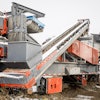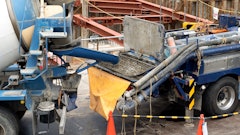
You can create a skate park, swimming pool, or a school with it, from airports to apartments and high rises to our homes, concrete is the quintessential element supporting our civilization. Concrete is in high demand, yet few people understand it is extremely demanding work, most people outside our industry struggle to comprehend the price we pay to place concrete.
If we negotiate from an insecure stance we jeopardize our earnings; only when you are profitable will your business continue running. A lot more goes into preparing our estimates than measuring man-hours and materials, there are a multitude of factors and challenges unwritten in our budget that affect the placement of concrete.
As you prepare your estimates you have to factor in accommodating conflicting schedules between several other trades working on the same project, like excavators or plumbers, as well the concrete plant and onsite testers. You need to appreciate the value of your crew’s abilities and the brute physical stamina required to form and place concrete. Consider the cost of the stress of managing others' expectations as well. There are issues like difficult terrain to overcome and equipment expenses such as pumps or conveyors to consider.
Concrete doesn’t ship from the plant with a pause button—once that drum spins at the batch plant, the clock is ticking and the margin of error is slim for those who take the risk of taming concrete. Concrete uniquely has an immediacy intrinsically woven into it, it is pliable enough as it comes down the chute that a toddler can manipulate the material, it starts with fluidity but it sets up within a very brief time becoming absolutely solidified. Knowing how and when to shape it and finish it takes years of tactile experience and knowledge, and few people have entered in and mastered our trade.
Being able to brace a foundation, vibrate it and avoid blowouts while keeping the wall plumb or having the ability to evaluate a slab and gauge the surface-level moisture with just a glance and knowing what steps are next, to feeling the surface pressure with a simple touch, knowing when the slab will support either knee-boards or troweling machines, knowing how to tie in a cold-joint from separate loads or when to get on a slab a little early so the timing works out so you don’t lose the slab all require a precise expertise. These can’t be learned from watching a video, these specialized hard-learned lessons only come from years of hands-on experience.
To be able to see concrete changing physically in real-time, and to feel the transformation of the concrete that’s been placed so that you know how to properly work it with the right tool at the right time it is an underappreciated art by people who can rarely conceptualize the process of properly placing the concrete. These talents are valuable, nearly priceless.
On top of that, placing concrete requires insights into how weather interferes with and impacts curing times. Adapting to the seasons, switching additives, and proper planning are all necessary to place concrete successfully year-round.
These factors all add up at the end of the day. Are they reflected accurately in your estimates?  @aboutmomentsimages - stock.adobe.com
@aboutmomentsimages - stock.adobe.com
Beyond these challenges, we also need a level of people skills as well. For insights into who will make from those who won’t, no one interacts with a greater spectrum of concrete contractors than a ready-mix dispatcher. In Northeast Tennessee, Randy Jenkins with Summers-Taylor Inc. thinks, “There are a lot of things that separate successful finishers from those who don’t make it but through the eyes of a dispatcher: A successful finisher will develop and maintain a good working relationship with the ready mix suppliers in their area (sales, plant managers, drivers, & most importantly dispatchers). They will have access to a whole host of knowledge and experience [once they demonstrate this] dispatch and sales can recommend them to potential customers.”
Scott Enger, owner-operator of Concrete Pumping Services of Eastern Idaho Inc., has worked in concrete continuously for 41 years. Once the general manager of 20-plus concrete pumps in the San Francisco North Bay Area he eventually became the ready mix operations and plant manager as well. His perspective on this topic: “From my experience, the most successful contractors I've dealt with were the ones that gave up the most details of what they expected and asked the most questions of me. In concrete, communication is King, so being on the same page with everybody who is directly involved with me on a project is paramount. The most successful contractors I deal with do exactly what they say they're going to do and when they say they're going to do it. My advice is always keep your word and treat each and every customer like they're your only customer. It's very hard to attain a new customer, so customer retention needs to be the focus. Keep that phone ringing!”
Whenever you experience periodic pushback on your prices and you wonder how to best communicate the rationale behind your rates, or simply to feel more confident in setting your rates, perhaps some of the ideas shared here will help influence you. A common mistake is dropping your prices to be competitive, but lowering your prices might compromise your company instead. The fear is if you charge too much you’ll lose their business, but the reality is if you charge too little you will lose your business.
Add up everything that goes into the mix of placing concrete and consider charging more and paying your people more, that way you attract the best possible team. From our gas stations to grocery stores, from the hospitals to our homes, our civilization depends on concrete. Know your worth, because the stress of overcoming our obstacles, the risks we take, and the talent required to place concrete is too valuable to give it away.





















